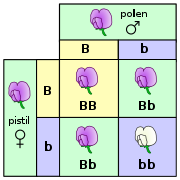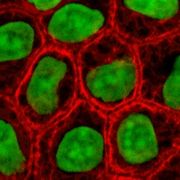The term biology in its modern sense appears to have been introduced independently by Karl Friedrich Burdach (1800), Gottfried Reinhold Treviranus (Biologie oder Philosophie der lebenden Natur, 1802), and Jean-Baptiste Lamarck (Hydrogéologie, 1802).[4][5] It was inspired by the Greek word βίος, bios, "life" and the suffix -λογία, -logia, "study of".
Although biology in its modern form is a relatively recent development, sciences related to and included within it have been studied since ancient times. Natural philosophy was studied as early as the ancient civilizations of Mesopotamia, Egypt, the Indian subcontinent, and China. However, the origins of modern biology and its approach to the study of nature are most often traced back to ancient Greece.[6] While the formal study of medicine dates back to Hippocrates, it was Aristotle who contributed most extensively to the development of biology. Especially important are his History of Animals and other works where he showed naturalist leanings, and later more empirical works that focused on biological causation and the diversity of life. Aristotle's successor at the Lyceum, Theophrastus, wrote a series of books on botany that survived as the most important contribution of antiquity to botany, even into the Middle Ages. Significant advances in the study and development of biology were promoted through the efforts of such Muslim physicians as the Afro-Arab scholar al-Jahiz (781–869) in zoology,[7] the Kurdish biologist Al-Dinawari (828–896) in botany,[8] and the Persian physician Rhazes (865–925) in anatomyphysiology. These philosophers elaborated on, expanded, and improved the Greek biological theories and systematics. Medicine was especially well studied by Islamic scholars working in Greek philosopher traditions, while natural history drew heavily on Aristotelian thought, especially in upholding a fixed hierarchy of life. and
Biology began to quickly develop and grow with Antony van Leeuwenhoek's dramatic improvement of the microscope. It was then that scholars discovered spermatozoa, bacteria, infusoria and the sheer strangeness and diversity of microscopic life. Investigations by Jan Swammerdam led to new interest in entomology and built the basic techniques of microscopic dissection and staining.[9]
Advances in microscopy also had a profound impact on biological thinking itself. In the early 19th century, a number of biologists pointed to the central importance of the cell. In 1838 and 1839, Schleiden and Schwann began promoting the ideas that (1) the basic unit of organisms is the cell and (2) that individual cells have all the characteristics of life, although they opposed the idea that (3) all cells come from the division of other cells. Thanks to the work of Robert Remak and Rudolf Virchow, however, by the 1860s most biologists accepted all three tenets of what came to be known as cell theory.[10]
Meanwhile, taxonomy and classification became a focus in the study of natural history. Carolus Linnaeus published a basic taxonomy for the natural world in 1735 (variations of which have been in use ever since), and in the 1750s introduced scientific names for all his species.[11]Georges-Louis Leclerc, Comte de Buffon, treated species as artificial categories and living forms as malleable—even suggesting the possibility of common descent. Though he was opposed to evolution, Buffon is a key figure in the history of evolutionary thought; his work would influence the evolutionary theories of both Lamarck and Darwin.[12]
Serious evolutionary thinking originated with the works of Jean-Baptiste Lamarck. However, it was the British naturalist Charles Darwin, combining the biogeographical approach of Humboldt, the uniformitarian geology of Lyell, Thomas Malthus's writings on population growth, and his own morphological expertise, that created a more successful evolutionary theory based on natural selection; similar evidence led Alfred Russel Wallace to independently reach the same conclusions.[13]
The discovery of the physical representation of heredity came along with evolutionary principles and population genetics. In the 1940s and early 1950s, experiments pointed to DNA as the component of chromosomes that held genes. A focus on new model organisms such as virusesbacteria, along with the discovery of the double helical structure of DNA in 1953, marked the transition to the era of molecular genetics. From the 1950s to present times, biology has been vastly extended in the molecular domain. The DNA code was cracked by Har Gobind Khorana, Robert W. Holley and Marshall Warren Nirenberg after DNA was proven to contain codons. Finally, the Human Genome Project was launched in 1990 with the goal of mapping the general human genome. This project was essentially completed in 2003, with further analysis still being published. The Human Genome Project was the first step in a globalized effort to incorporate accumulated knowledge of biology into a functional, molecular definition of the human body and the bodies of other organisms. and















